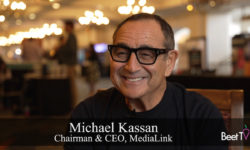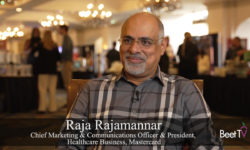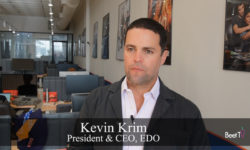You know times have changed when an upstart OTT TV service can launch a channel for the upcoming FIFA World Cup, one of the most premium sets of sports rights in the world.
Tubi’s new FIFA World Cup FAST Channel is likely a product of sitting alongside Fox Sports in FOX Entertainment, which acquired the service for $440 million in 2020.
In this video interview with Beet.TV, Mark Rotblat, Chief Revenue Officer, Tubi, explains how soccer and scale are driving the provider.
Streaming soccer
Available in the US, FIFA World Cup FAST Channel launches ahead of the 2022 tournament in Qatar this November and December, including:
- Highlights.
- Analysis.
- Every game available to replay, on-demand and via EPG.
- Re-runs of previous tournaments and classic games.
- Films building-up to Qatar.
- Games from previous women’s World Cup tournaments.
- FOX Sports Digital content, including highlights compilations.
It is a curation aimed at drawing ad dollars during what is always a period of high ad buyer demand.
“We’re really excited,” Rotblat says. “We have the exclusive rights, streaming rights, at Fox and Tubi, for the English language of World Cup in the US.
TV’s new tricks
For Rotblat, soccer is not the only game in town. In September, the company announced a big 65% annual increase in monthly active users, up to 33 million in August, as well as growth and launches outside the US.
“As people look at the data, they see Tubi has massive scale and performs really well,” Rotblat says.
“There is, I think, a flight to efficiency and performance for those that are facing economic headwinds. Streaming and connected TV is a great place for that.”
Rotblat says streaming TV ads are helping bring advanced measurement tactics like attribution to in-store visits and website traffic to TV ads, a channel that had historically been considered just a top-of-funnel medium.
Free and simple
As SVOD specialists like Netflix and Disney+ launch ad-funded tiers into a bearish economy, Tubi’s Rotblat is thankful his service has only ever been free, ad-supported TV (FAST).
“Sometimes, those paywalls create confusion because maybe the total audience of a streaming service that has no ads, paid with some ads, pay less with more ads… it gets confusing to figure out what’s the actual reach I’m going get,” he says.
“We’re in the fortunate position being completely free. That creates no friction for our viewers to come on board, so we get massive scale that way.
For the marketers, they know the total scale is the reach which we have through all of our viewers.”
You’re watching “Assessing TV Performance in a Changed Landscape,” a Beet.TV Leadership Series produced at the 2022 ANA Masters of Marketing, presented by EDO. For more videos from this series, please visit this page.













































